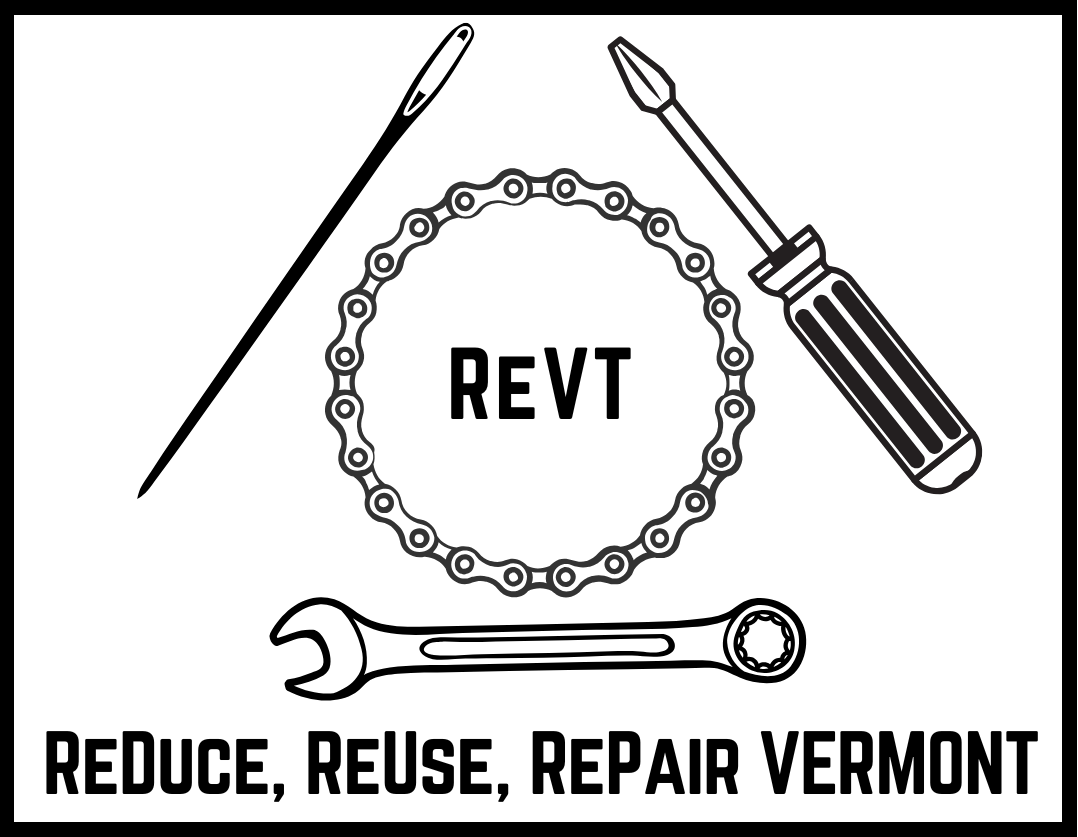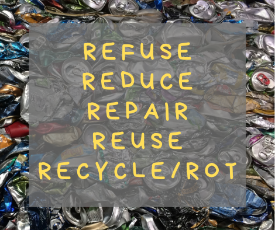ReVT: Vermont's New Reuse and Repair Network!
 Picture this: You're on a vacation and the wheel of your suitcase jammed on the way home. This suitcase is perfect except for the wheel, so you decide to buy a replacement wheel instead of throwing it away. You're not sure how to fix the wheel yourself, but how can you find someone who can fix it?
Picture this: You're on a vacation and the wheel of your suitcase jammed on the way home. This suitcase is perfect except for the wheel, so you decide to buy a replacement wheel instead of throwing it away. You're not sure how to fix the wheel yourself, but how can you find someone who can fix it?
ReVT is a new network that hopes to find a solution for problems like this. This network will bring together the Reuse and Repair community to:
- bring greater awareness and support to reuse and repair communities,
- significantly increase the amount of reuse and repair and,
- reduce the amount of waste going to Vermont’s only landfill.
Goals include:
- Collaborate and share experiences to build a sustainable ReVT community,
- Identify barriers to growing reuse and repair habits and businesses,
- Identify opportunities to market reuse and repair to all Vermonters,
- Promote the circular economy and keep local dollars local.
Email Susan Alexander (MullandMor@outlook.com) to learn more!
Recycling and composting are great, but the biggest impact you can have on Vermont's waste stream is to create less waste in the first place.
There are countless ways to reduce waste, and many will save you money, especially in the long-term. Start with the ideas that feel right for you! Remember, “zero waste” is a goal that starts with creating "less waste." Little changes add up to make a big difference.
 Ideas for reducing waste:
Ideas for reducing waste:
Purchasing: Think about whether you can use something you already have and skip the purchase. Buy items packaged in bulk and/or packaged in recycled content or recyclable packaging. Buy reusable rather than single-use items. Purchase second-hand items when possible.
At Home: Use cloth napkins. Eat your leftovers! Some food waste is unavoidable, like banana peels or coffee grounds. By making sure to eat your leftovers, your family can save money and reduce food waste.
Out and about: Bring reusables with you – shopping and produce bags, water bottle, travel mug, container for leftover food, utensils, straw, cloth napkin, etc.
Special Occasions: Use digital invitations and RSVPs. If you need to buy someone a gift, give a gift of an experience, rather than an object. Wrap gifts in reusable bags and cloth towels.
Parties and Events: Bring your reusable water bottle to stay hydrated throughout the event!
Want to learn more? Check out these external resource:
- Continue learning how to shop, store food, and cook so you waste less food and save money
- Opt out of junk mail
- Only throw out food when it’s actually bad
- Make your own household cleaning products and stop using toxic chemicals/cleaners that contribute to household hazardous waste and cost a lot to dispose of.
- Ask your waste district or town if they rent out signs, bins, event kits, or if there is a Waste Warrior volunteer program in your area
- General Books
- 101 Ways to go Zero Waste, by Kathryn Kellogg
- Less Stuff; Simple Zero-Waste Steps to a Joyful and Clutter-Free Life, by Lindsay Miles
- Life Without Plastic by Chantal Plamondon and Jay Sinha
- The Ultimate 66 day Challenge, by Loulou River
- Zero Waste Home, by Bea Johnson
- Zero Waste: Simple Life Hacks to Drastically Reduce your Trash, by Shia Su
- Cookbooks
- Blogs

